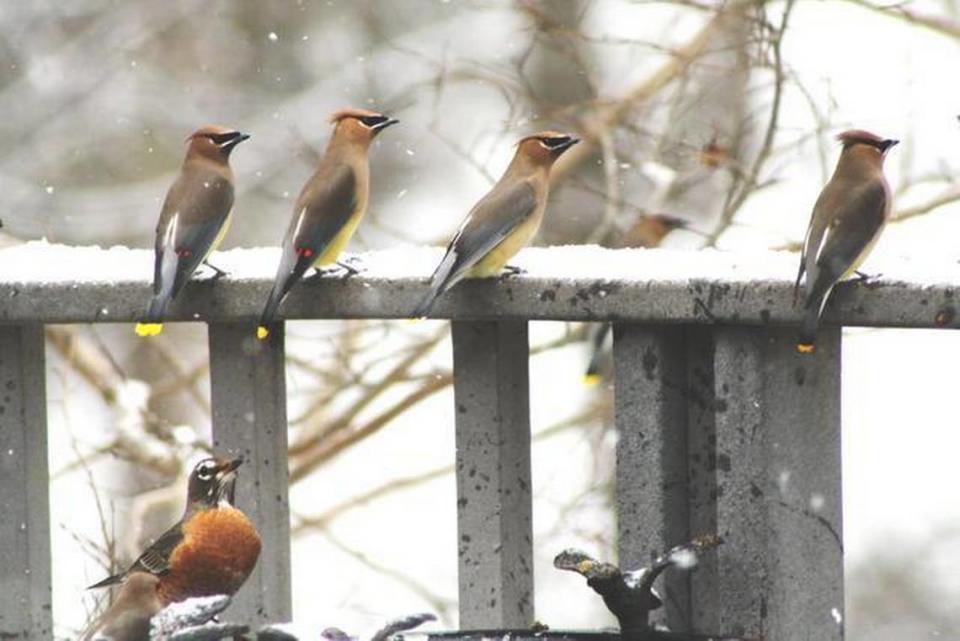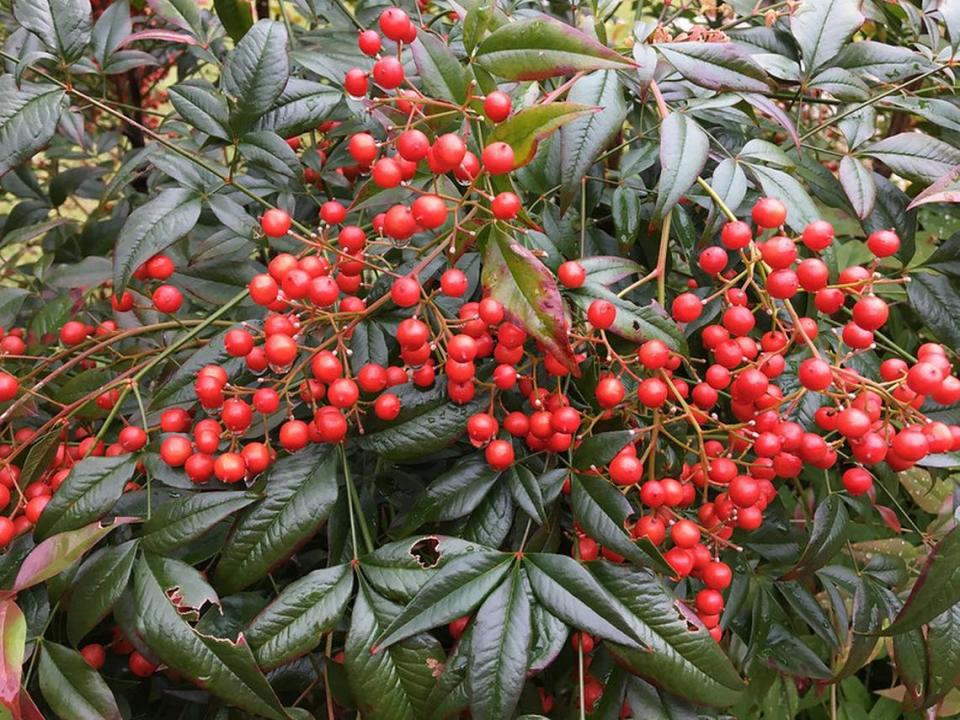This common yard shrub kills hundreds of NC birds each winter. Is one near your home?
A non-native plant is known to poison — and often kill — hundreds of birds in North Carolina each winter.
Nandina domestica, often known as Heavenly Bamboo, is often used in yard landscaping, and you may even have one near your home. Gardening stores love to sell them, say members of the New Hope Audubon Society, the local chapter of the national bird conservation group.
It’s an invasive plant originally from Asia. Their gorgeous red berries look like great bird snacks, but the berries are filled with cyanide and can poison and sicken our feathered friends in the Triangle.
A few years ago, a curator at the NC Botanical Garden found several dead birds within sight of a large planting of Nandina on UNC-Chapel Hill’s campus, leading to a study of the plant and its toxic qualities.
New Hope Audubon members want to spread the word on these plants and their dangers to wildlife — especially one local bird species that often dies from eating this plant in the wintertime.
Here’s what to know about the plant and what you can do to keep our local birds safe.

Which birds die from Nandina (Heavenly Bamboo)?
Many birds have evolved over thousands of years to eat berries in the winter to survive, said Carol Hamilton, New Hope Audubon’s president.
“In our locale, Cedar waxwings — gorgeous birds that live here all year long — are one of those birds, and their eating habits are such that when they see a bush with lots of red berries or fruit, they descend as a flock and stuff themselves,” she said.
These birds “are hardwired to eat them. To them, red plus berry equals yum!”
But each berry contains cyanide, which is deadly in large quantities.
You can learn more about Cedar waxwings by visiting ebird.org/species/cedwax.

How is Heavenly Bamboo poisonous or deadly?
The NC Botanical Garden’s study found that Nandina leaves are “highly cyanogetic,” or cyanide-producing, throughout the whole year.
Both the leaves and the plant’s unripe, green berries release cyanide rapidly when they’re damaged or eaten. Red berries release cyanide more slowly, so birds that pick at one or two berries will merely vomit and feel sick for a day.
“A flock of cedar waxwings can strip the fruits from a nandina bush in minutes, but as the fruits are digested, they slowly release cyanide in quantities that overwhelm the birds’ ability to detoxify it,” the NC Botanical Garden wrote in 2022.
But tiny birds, as well as other birds that tend to stuff themselves with the red berries when they’re abundant, can also die from over-eating the poisonous fruit, Hamilton said.
To read the Garden’s study, visit ncbg.unc.edu.

How to identify Nandina (a.k.a. Heavenly Bamboo)
Here’s what the NC State Extension Gardener Plant Toolbox says:
Berries: Bright red and grow in a terminal cluster, which can resemble a bunch of grapes. Berries are bright red in cold months, small and spherical.
Growth: Cane-like, meaning new shoots grow straight up and unbranched from the plant’s crown.
Leaves: Decompound leaves can be one to two feet long. New growth (as well as fall foliage) can appear reddish.

How to protect local birds from poisonous plants and berries
Here’s what the birders at New Hope Audubon say:
• Get rid of your Heavenly Bamboo: Do this by first identifying that’s what it is. You can reach out to NC State Extension or identify with the help of plant apps. Hamilton recommends the apps Picture This, Seek and iNaturalist.
• Replace Nandina with local offerings: Alternatives include American beautyberry, Button Bush and Winterberry, says NC State Extension.
If you love Cedar waxwings, you can plant the Eastern Redcedar, which the NC Botanical Garden says is the birds’ preferred native food plant.
“Now is a great time to plant bushes because they will have time to get roots settled before it turns hot and dry,” Hamilton said.
• Chop off the poisonous part: If you want to keep your Nandina plant, here’s how to make sure it does the least amount of damage for our local birds.
When you see the berries, chop them off.
Throw the berries out somewhere the birds won’t see them and/or where they won’t germinate and grow into another deadly bush.
In the spring, when the plant makes its small flowers, chop those off too so the berries don’t have the chance to grow.
Triangle Asked & Answered: What do you want to know?
Have a question about something in our community? The News & Observer’s Service Journalism team wants your questions for our Triangle Asked & Answered series. Reach out to us by filling out this form or by sending an email to ask@newsobserver.com.
Black sludge and old food cited at restaurant kitchens: Triangle sanitation scores (Jan. 9)
Looking for a change in the new year? Some work-from-home state jobs in NC pay $100K+

